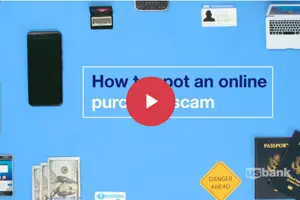
How to report a scam

How to spot an online scam

While restaurant sales have rebounded and are even outpacing pre-pandemic levels, COVID-19's changes to the industry and to customer behavior have left a lasting mark. At the time, pandemic safety guidelines meant restaurants pivoted to add or increase takeout services, delivery, curbside pickup and outdoor seating. And as many dining purchases moved away from in-person interactions to reduce contact between staff and patrons, e-commerce, digital wallets, mobile apps and QR codes became common.
But as customers put their pandemic behaviors behind them, some of these payment methods have remained popular, while others peaked.
Online ordering and takeout surged during the pandemic, and the popularity of these formats has remained intact. In a survey in March 2023, 69% of respondents said they got takeout or delivery at the same rate or more frequently than a few years prior.
These habits are combined with a resurgence of in-person dining – 55% of customers reported dining in-person at the same or higher rate than before the pandemic. But the returning popularity of in-person dining may mean a plateau for takeout and online ordering numbers moving forward.
The significant share of online ordering means it’s essential for restaurants to continue to prioritize a seamless digital experience for their customers: 40% of consumers chose to order directly from a restaurant’s website versus 13% who expressed a preference for third-party apps or websites. Keeping fees to a minimum is a driving factor here – 87% of customers felt that a delivery fee of $5.00 or less is fair.
In addition to an increase in online, mobile, and contactless payments, generational preferences are also driving a major shift in how consumers pay, whether dining in person or getting take-out.
According to PYMNTS, Gen Z is the most open to payment innovations compared to other generations – 79% of those surveyed have tried a new payment method in the last year and 66% are using digital wallets to make payments.
During the pandemic, the desire for contactless interactions – coupled with staff shortages – led many restaurants to adopt QR codes for access to menus as well as for collecting payments. And over the first 18-months of the pandemic, use of QR codes increased 750%.
But this trend may be fading – scans of restaurant QR codes fell by 27% from 2022 to 2023. Fewer restaurants are creating new QR code-driven menus, and of those who already have QR code menus, just 25% were scanned more than 90 times in the past 12 months, showing a drop in customer behavior.
Although the contactless QR code menu may be fading, contactless payments are still on the rise, with a predicted global compound annual growth rate of over 19% from 2022-2030.
While restaurants had a tough time during the pandemic, as of 2023, the National Restaurant Association saw signs that business was returning to normal – with consumer demand bouncing back and 84% of customers saying going out to eat is a better use of their leisure time than cooking at home.
As restaurants compete for customers, the challenge will be retention and loyalty. A PYMNTS survey showed that 51% of consumers are part of at least one restaurant loyalty program, and that 39% of customers are inclined to spend more when restaurants offer loyalty and rewards options.
Restaurant owners should take the lessons learned during the pandemic to help drive innovation and build loyalty, while controlling costs.
Customer expectations are constantly evolving and impacting the restaurant industry, and adapting to new payments technology is essential for businesses. Contact your U.S Bank relationship manager to stay ahead of payments trends.
Related content


